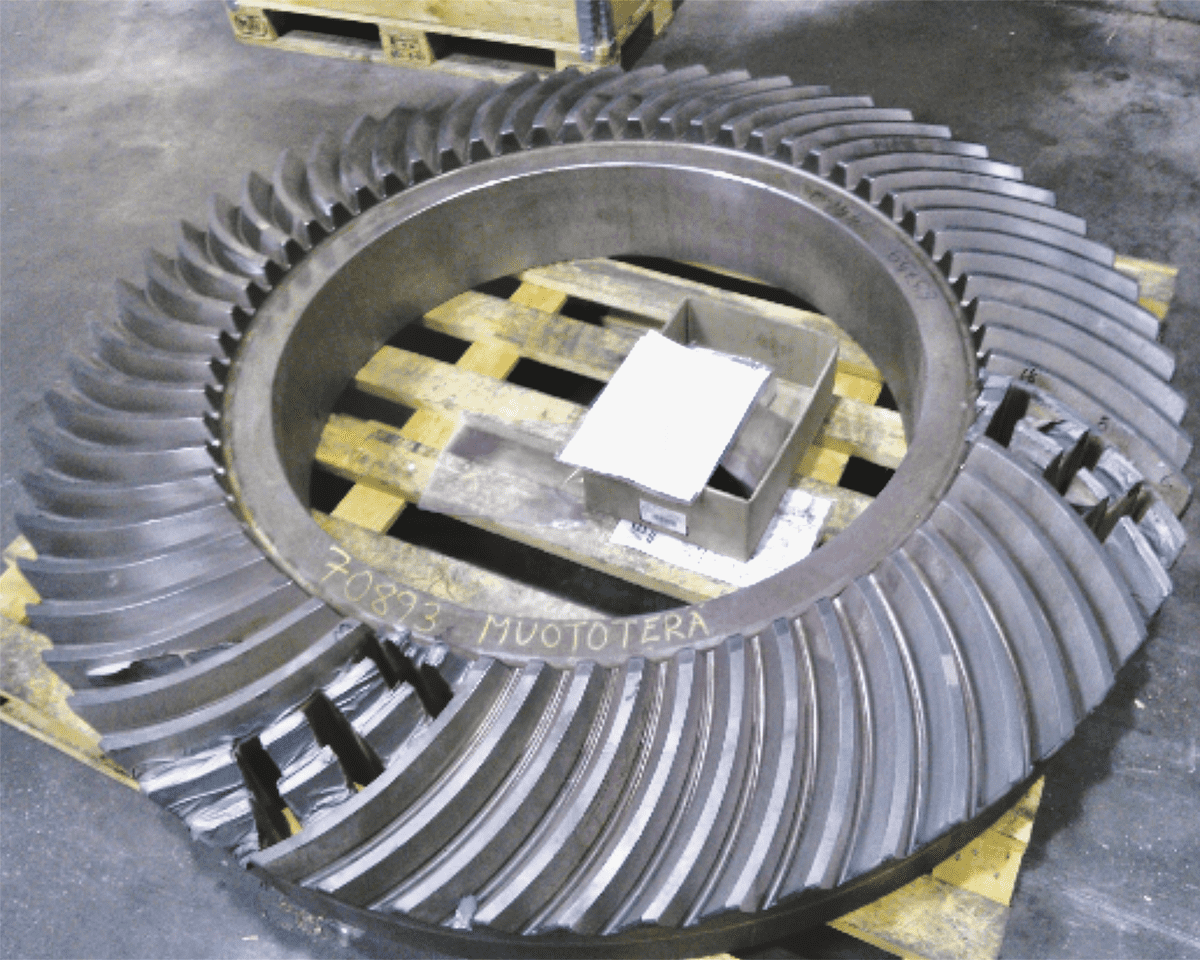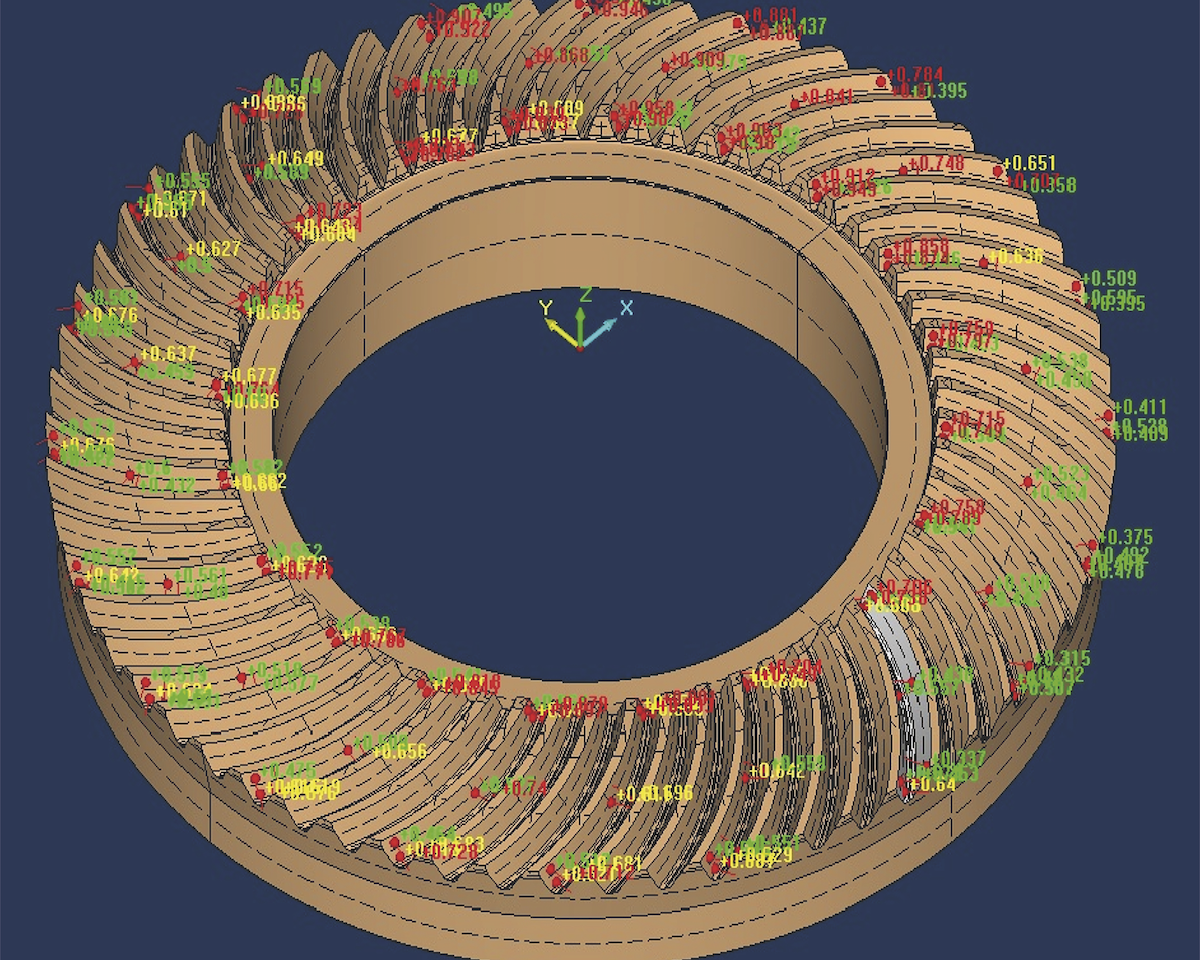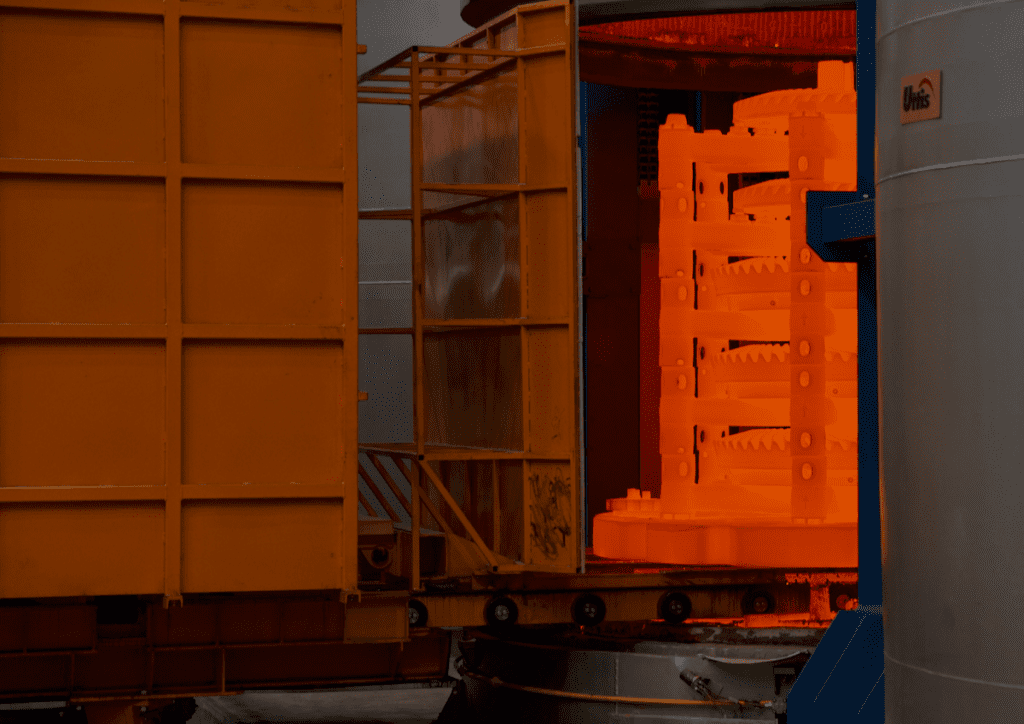Gears are expected to function reliably for years or even decades under extreme loads, so case hardening is one of the key development areas in this specific field of mechanical power transmission. That’s why ATA’s Gear Doctors are ceaselessly researching heat treatment and material science.
Water jet cutting, sample cutting, grinding and polishing, adding to all those hours we have spent in the privacy of the lab… To date, we have studied a total of some 250 tooth cross-sections, heat treated and cut open well over a hundred different test pieces, including tens of in-service production gears. All sacrificed for the sake of quality and science. So we can be proud of our database of well over 10,000 individual hardness measurements – and you can be sure of getting gears that meet your exacting requirements.
Data for development
Due to the strict quality requirements and the demanding applications for which our gears are manufactured, we take care to record a huge amount of manufacturing data on every gear made. This documentation includes details of the chemical composition of the steel heat, the amount of carbon dioxide and monoxide in the heat-treatment furnace, information on the surface roughness and microtopography of the tooth flank, and so on. That’s a lot of data.
Even this valuable data, however, needs someone or something to interpret it. ATA’s Gear Doctors: We continually analyse all manufacturing data and teeth hardness measurements. In addition to that, we use a special software for calculating the hardness profile of a finished gear tooth with unprecedented accuracy.


A process of precision
The key to making any reliable case-hardness depth calculations is to keep the process accurate and constant. And the fact is, the bigger the gears, the more important the role of fixturing becomes in view of distortions. Why? Simply because gears tend to deform and creep under their own weight in the extreme temperatures inside the furnace.
Yet another crucial step is the precise simulation of the carbon profile – because the carbon profile determines the hardness profile attainable and the case-hardness depth. As much carbon as possible is “boosted” into the surface. Then the surface carbon is adjusted to the correct level.
To complete the operation, and to measure the carburising atmosphere, ATA Gears utilises the latest equipment available in the heat-treatment industry. This ensures that the real carburising results are extremely close to the simulated profile.
Knowing how to calculate
When carburising is done in a specific, strictly controlled manner, the carbon profile remains almost constant across all components in the same batch. ATA’s Gear Doctors have developed a mathematical model to calculate the hardness profile of a gear. This model is based on the carbon profile produced and on various other parameters, such as gear geometry, chemical composition, the quenching process and the actual stock removal in tooth finish. All this information is then fed into the ERP, and you’re all set: The output is the final case-hardness depth of the gear teeth. And the system also automatically compares the final calculated values to the customer’s requirements.
Thanks to all these developments, ATA Gears is able to tell the exact case hardness depth of the gears we deliver to you.
Tami Komssi, ATA’s Sales Director

